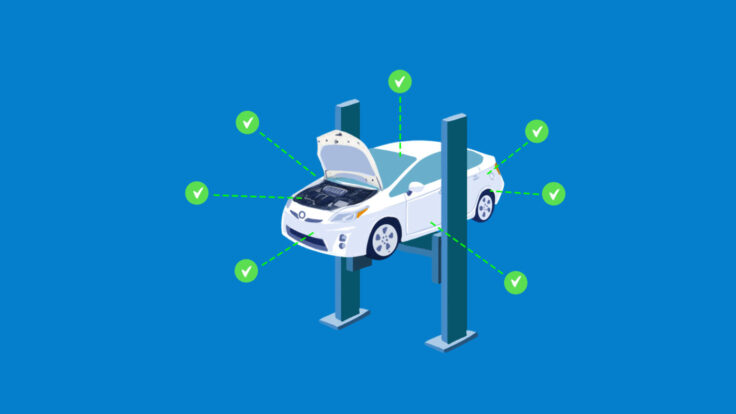The realm of used cars is vast and varied, presenting a myriad of options for potential buyers and sellers. One of the most crucial aspects when diving into this expansive market is understanding the value of the car you’re interested in. Whether you’re a first-time buyer wanting to ensure you pay a fair price, a seasoned seller hoping to get an appropriate return on your vehicle, or even a car enthusiast looking to expand your collection, estimating a used car’s value can seem like navigating a maze. The factors influencing a car’s worth range from its physical condition to market trends. Fortunately, with the right tools, a keen eye, and a bit of knowledge, you can navigate this challenge efficiently, ensuring you make informed decisions.
Age of the Vehicle

Cars, like most assets, depreciate over time. As a rule of thumb, newer cars retain more of their value. Depreciation hits hardest in the first few years, making the car’s age a significant determinant of its value. For instance, a car that’s only a year old might retain up to 80% of its original value, while a five-year-old vehicle might only retain about 50%. This rapid decline in the initial years means that buyers can often find relatively new cars at significantly reduced prices, while sellers need to be realistic about their price expectations.
Mileage
A car’s mileage serves as a testament to its usage. Typically, lower mileage vehicles tend to have a higher value, as they often have more life left in them and show less wear and tear. On average, a car accumulates about 12,000 to 15,000 miles annually. Cars that have mileage significantly lower than this average for their age can command higher prices. Conversely, high-mileage cars might see a dip in their value, as potential buyers might anticipate more maintenance costs.
Condition

A car’s overall condition is a comprehensive reflection of its past. From the car’s exterior paint job, the state of its tires, to its interior features, electronics, and mechanical health, every detail plays a pivotal role in determining its value. Cars that have been well-maintained, regularly serviced, and show minimal signs of wear usually command a higher price. On the other hand, visible dents, scratches, or malfunctioning features can significantly reduce a car’s market appeal.
Market Demand
The automotive market is influenced by trends, consumer preferences, and technological advancements. The popularity of the car’s make and model in the market can significantly influence its value. Some models, due to their reliability, innovative features, fuel efficiency, or brand reputation, remain in higher demand, ensuring their value doesn’t plummet too rapidly. Conversely, models that have been discontinued or have a history of frequent issues might not fetch as high a price.
Vehicle History Report

A car’s past can speak volumes about its present condition. Accidents, major repairs, flood damage, and the frequency of maintenance can significantly affect a car’s value. A comprehensive vehicle history report can provide insights into past events, ownership changes, and even recalls that might impact the price. Buyers are often willing to pay a premium for cars with clean histories, while sellers should be transparent about any past incidents to build trust.
Location
Geography plays a surprisingly significant role in a car’s value. Depending on where you’re located, certain cars might be more or less valuable. For example, four-wheel-drive vehicles or SUVs might command a higher price in areas with rough terrains, mountainous regions, or harsh winters. Conversely, in urban settings, compact cars or hybrids might be more sought after due to their maneuverability and fuel efficiency.
When it comes to truly understanding the value of a used car, DriveAxis stands out as a beacon of knowledge and reliability. Their platform not only offers a diverse range of vehicles but also provides tools and resources to help you assess a car’s worth accurately. With a platform like this, you can leverage their vast database, user reviews, and experienced team to ensure that whether you’re buying or selling, you’re always on the right track to getting the best value. Their commitment to transparency and customer satisfaction makes them a trusted ally in the used car market.
Maintenance Records

One of the most underrated aspects of a car’s value is its maintenance record. A well-documented history of regular servicing and repairs speaks volumes about the car’s past. It’s not just about the number of times the car visited the garage, but the quality of care it received during those visits.
Imagine you’re a potential buyer, presented with two identical cars. One has a clear, detailed record of timely oil changes, brake replacements, and other essential services. The other offers vague assurances of “regular maintenance.” Which would you trust more? A comprehensive maintenance record not only demonstrates responsible ownership but also provides a tangible assurance that the car has been well taken care of. Such a vehicle is likely to encounter fewer issues in the future, making it a more attractive purchase. Always keep a detailed log of all services, repairs, and replacements. If possible, retain receipts and documentation from certified mechanics or service centers.
Aftermarket Modifications
Aftermarket modifications can be a tricky territory. While some upgrades, like high-quality sound systems or leather upholstery, can enhance a car’s appeal, others might not be as universally appreciated. For instance, a powerful aftermarket exhaust might be music to the ears of a car enthusiast but could be seen as a nuisance by others.
It’s essential to understand that not all modifications add value. Some might even decrease it, especially if they alter the car’s original performance or safety specifications. Consider a car with a lowered suspension. While it might appeal to a niche audience looking for a sportier look, it could deter buyers concerned about the vehicle’s ability to handle everyday road conditions.
Seasonal Factors
The seasons can play a surprising role in the desirability and, consequently, the value of certain vehicles. Convertibles are a classic example. These sun-loving vehicles often see a surge in demand during the warmer months, leading to higher prices. Conversely, the chill of winter can make them less appealing, potentially reducing their value. It’s not just convertibles. Four-wheel-drive vehicles might fetch higher prices in regions prone to snowy winters, thanks to their superior traction.
Conclusion
Estimating a used car’s value is both an art and a science, requiring a blend of research, intuition, and experience. By considering various factors, tapping into reliable resources, and staying updated with market trends, you can approach your purchase or sale with confidence. Always remember that the true value of a car isn’t just in its price tag but also in its ability to meet your unique needs, provide safety, and offer a reliable mode of transportation.


